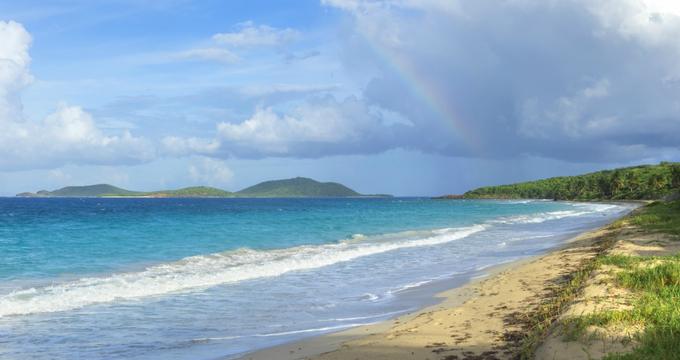Unplug and explore the unspoiled beauty of Culebrita Island, a remote, uninhabited paradise just off the eastern coast of Culebra, Puerto Rico. Accessible only by private boat or water taxi, this protected part of the Culebra National Wildlife Refuge offers secluded beaches, tidal pools, sea turtle sightings, and one of the last remaining Spanish lighthouses in the Caribbean. A dream for nature lovers, snorkelers, and hikers alike.
I Find This is Great For:
Nature Lovers: Spot endangered sea turtles, pelicans, and more across untouched tropical habitats.
Beachgoers: Relax on white sand beaches like Playa Tortuga, or explore tidal pools that double as natural whirlpools.
Adventure Seekers: Hike scenic trails leading to the historic lighthouse with panoramic views of the Caribbean.
Wildlife Watchers: Observe native birds, reptiles, and plant species across this protected island ecosystem.
What to Expect
- Access: Reachable only by water taxi or private boat; no overnight stays or on-site businesses
- Wild Setting: No facilities or amenities—visitors must bring their own water, food, and gear
- Weather Dependent: Check marine conditions before departure; there are no staff or safety patrols on the island
Island Highlights
- Playa Tortuga (Turtle Beach): A stunning white sand beach perfect for swimming, sunbathing, and snorkeling
- Natural Tidal Pools: Located on the east side, these rock-formed “whirlpools” offer a relaxing soak with ocean views
- Culebrita Lighthouse: Built between 1882–1886 and now a historic ruin with sweeping views—great for hiking and photos
- Lagunas & Trails: Explore the serene Laguna de Molino and Eastern Tidal Flat via scenic trails with views of nearby St. Thomas and Cayo Norte
Wildlife & Conservation
- Protected Refuge: Part of the Culebra National Wildlife Refuge, preserving rare ecosystems and endangered species
- Sea Turtle Habitat: Green and hawksbill turtles are commonly seen nesting or swimming offshore
- Bird Watching: Look for brown pelicans, white-cheeked pintails, and seasonal waterfowl
Getting There
- Transportation: Book water taxis or day tours from Culebra via:
- Gammy’s Water Tours and Taxi
- Willy’s Water Taxi
- Guilin’s Water Taxi
- Culebra Water Taxi
- Tour Packages: Options like East Island Excursions’ Culebra Getaway include snorkeling gear and guides
- Gear Rentals: Available in Culebra for snorkeling, hiking, and day trip prep
Plan Your Visit
- Hours: Day-use only; no overnight camping allowed
- Essentials: Bring sunscreen, water, snacks, reef-safe sunscreen, and proper footwear for trails and tidepools
- Best Time to Visit: Dry season (Dec–April) offers calmer seas and better snorkeling visibility
Visitor Info
- Location: Culebra National Wildlife Refuge, Culebra, PR
- Starting Point: 2 Paseo La Princesa, San Juan, PR 00902
- Phone: 787-721-2400
- Website: discoverpuertorico.com
Tip: Plan ahead—since Culebrita is undeveloped, pack light but bring all the essentials. If you're up for hiking, make time for the trail to the lighthouse for unforgettable views and a real sense of remote island history.
Plan Your Trip


